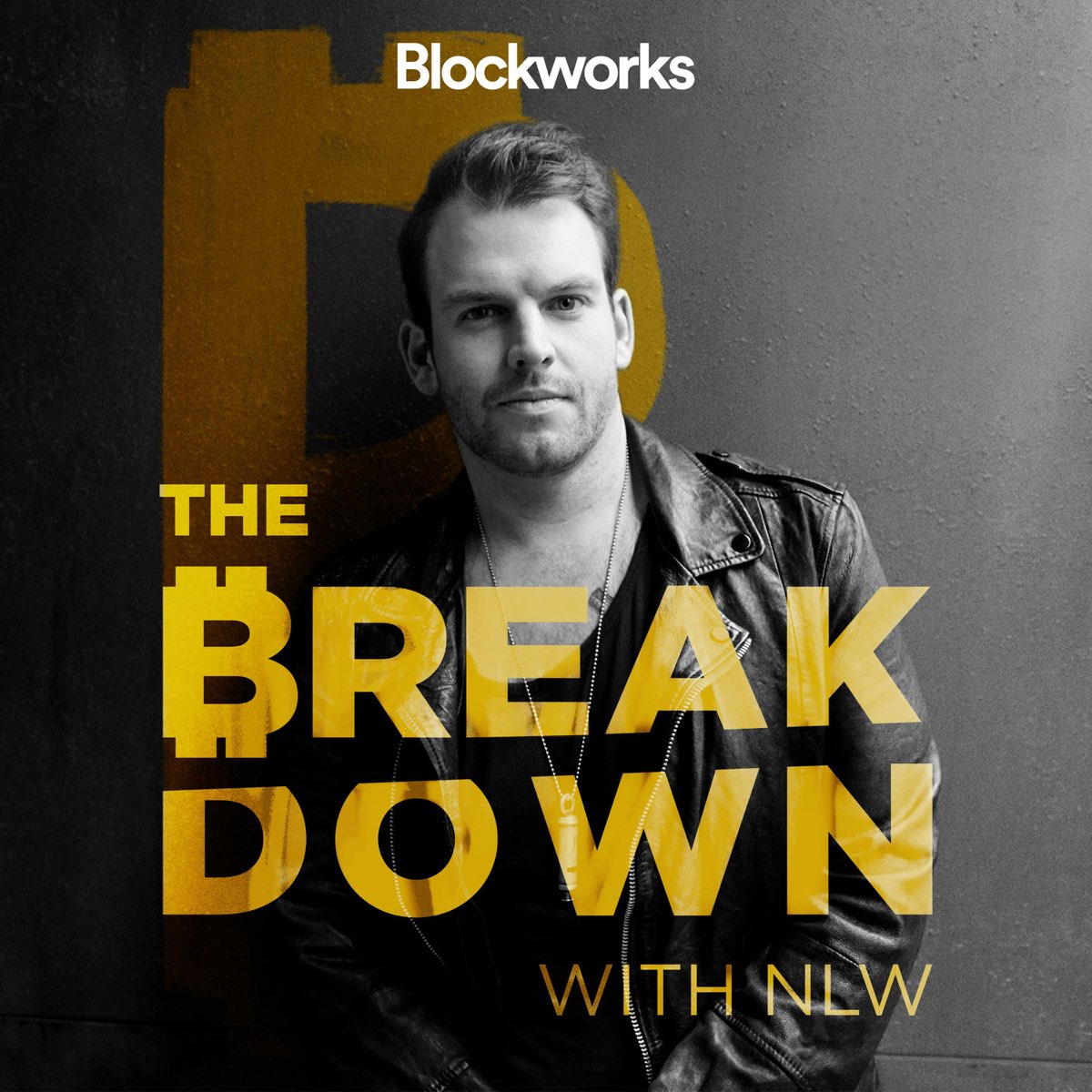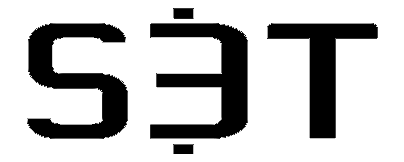⚠️ Feb 7 - Unloved problems & high stakes decisions & shifts

One of the great unloved problems in healthcare is how to identify and enable innovations that actually drive costs down instead of up.
In this Issue
🔹 Apply a Growth Mindset to Difficult Decisions – Making tough choices with confidence, following through, and adapting ensures better outcomes, turning uncertainty into opportunity.
📈 A Sea Change Coming to Public Markets – Tokenizing private capital could open up high-return investments to more people, challenging traditional stock markets and investment barriers.
🏥 Shifting Trends in Healthcare – Private equity is moving from “wait and see” to aggressive growth, but rising costs and flawed financial models demand innovation that truly drives affordability.
🪙 Ethereum vs. Solana & the Future of Crypto – Solana’s institutional traction could challenge Ethereum’s dominance, signaling shifts in blockchain adoption and investment strategies.
🐙 Tackling Wicked Problems with Change Leadership – Navigating complex, systemic challenges requires strategic thinking, adaptive solutions, and leadership that embraces uncertainty.
🙏 Thank you for reading and sharing S3T!
[perspective]

How to apply a growth mindset to the process of making difficult decisions
Like so many right now, you may be facing a difficult decision. For many, this decision relates to whether to stay in their current job, or go look for another. Whether to retire early or not. Or maybe whether or not to continue a business venture. Some of you may have already just made a very difficult decision and now you're worried about what comes next.
So this is a great time to talk about how to apply an Active Growth Mindset in Difficult Decisions. We emphasize the word active because decision making is not just a mental thing, it's a set of activities.
Difficult decisions often come with:
⚡ Incomplete information – We don’t have all the data or insight we’d like.
⚡ Time constraints – There’s not enough time to fully analyze every trade-off.
⚡ Uncertainty – There are unknowns we can’t predict, and even if we could, odds are just odds—not guarantees.
⚡ Personal Dilemmas - something about the decision make us feel a fear of loss: that we might lose credibility, or lose our financial security, or lose connections that matter to us.
Faced with the challenges of difficult decisions, it’s easy to spiral into decision paralysis or feelings of hopelessness:
💭 No matter what I choose, it will turn out to be the wrong decision.
💭 I’ll regret this either way.
But what if we shift our approach? What if we apply a growth mindset to the entire decision-making process?
Every decision has a 3 part timeline:
1️⃣ The time leading up to the decision – Gathering insights, assessing options, and preparing.
2️⃣ The decision itself – Choosing with confidence, knowing we’ve done our best with the information available.
3️⃣ The time after the decision – Following through, adapting, and making sure the choice works out well.
When we apply a growth mindset across this full timeline, we don’t just make better decisions—we create better outcomes.
What are you telling yourself about your decision?
When we make tough decisions it’s essential to intentionally create your own narrative around those choices. This means framing your decisions with clarity:
- Here’s what I’m going to do. "I've decided to ____ "
- Here’s why I’m doing it. "I'm doing this because ____"
- Here's how I've prepared, or am preparing. "To improve the odds of good outcomes I'm preparing/doing ____ "
- Here's what I believe about myself. "Even if the worst happens, I know I am adaptable, intelligent, able to learn and grow. I have proven that I can navigate new chapters, overcome setbacks, and find ways to thrive."
👉 Your mindset determines how you move forward. Instead of thinking, This is all happening to me, shift to This is happening for me. Instead of expecting the worst and just hoping for the best, actively prepare for challenges while intentionally working toward the best possible outcome.
Prepare for the worst but expect - and work toward - the best
A growth mindset in action means:
✅ Making decisions confidently—even when the information is incomplete.
✅ Owning the risks, consequences, and even regrets if they come.
✅ Accepting that challenges are part of the process, not signs of failure.
✅ Preparing for setbacks but actively building toward success.
If you feel stuck in fear or self-doubt, remember:
Your ability to adapt and grow is greater than any single event or situation.
Keep moving forward with an active growth mindset—decisive, prepared, and focused on your best path ahead.
Follow-Through: Turning Decisions into Success
An Active Growth Mindset doesn’t stop after the decision is made - It follows through with continued action that helps bring good outcomes.
Making a tough decision is just the beginning. What comes next—your follow-through—is what truly determines how things play out. A strong decision-making mindset doesn’t just say: I made my choice. It also asks: What am I going to do now to make sure this decision leads to the best outcome possible?
Every decision is like planting a seed.
Think about a time when you decided to plant a tree or a rosebush. Maybe it was tough deciding where to put it. But once you make a decision and planted it in the ground, that wasn't the end of it, right? You came back and tended it every day, to make sure it was growing and leading to the outcome you wanted. Decisions are like that. They're not one time events. They're investments.
Once you’ve made a decision, you can take proactive steps to follow through - like these:
✅ Understand the situation more fully – Keep learning about your choice and the environment around it. What can you do to ensure it works out the way you're hoping?
✅ Build new skills – Strengthen yourself to handle challenges that come with your decision. What can you learn that will help you create the best possible outcome?
✅ Stay alert to feedback – Pay attention to signals from your environment and recalibrate when needed. What can you adjust that will lead to better results?
Example: Choosing to Stay at Your Job Instead of Leaving It
Let's imagine that you faced a situation where you needed to decide whether to stay in your current role, or move on to another role. And it was a very difficult decision for you. But finally you made the decision. You decided to stay in your current role. What action do you take after that decision? What's the follow through?
Your follow-through could include:
➡ Building better relationships with colleagues and deepening your network.
➡ Asking your manager what skills you should focus on for growth.
➡ Proactively preparing for changes in your workplace so you can thrive in new challenges.
Just like a retirement account, you don’t just make the initial decision to invest—you keep adding to it over time to increase its value. Every decision works the same way.
To Recap: Active Growth Mindset
When we take an active growth mindset in the difficult decisions we make, it will make a difference in the way we approach the entire decision timeline:
- preparing to make the decision,
- making the decision and then
- following thru after the decision is made to drive the best outcome
So whatever choice you’re facing, don’t just stop at the decision. Own it. Build on it. Make it work for you. Hope this is helpful to you, and please feel free to share it with someone who may need an encouraging word.
[macro-economics]

Full Access Members: See the S3T Economic Dashboard for the Top 500+ US & International real-time economic indicators.
Sea change coming to public markets?
As NLW explains in this Breakdown episode, there is a gathering momentum toward the idea of giving retail investors more open access to the private capital investment opportunities. These opportunities have traditionally been reserved for "qualified investors" - that is, only individuals with incomes > $200K and savings of $1M+ (this is 2% - 9% of Americans) have been allowed to participate.

While private capital investments can be riskier, they also have far better returns, and are more diversified. Public stocks by contrast are over-concentrated in just a handful of tech companies: the stock market would have been flat the past 2 years without the "Magnificent 7"
Why would we keep average middle class investors out of the best performing investments, and relegate them to the stock market?
Well, the logic was that "unqualified investors" didn't have enough money, couldn't afford to lock it up in an investment fund for 5-10 years, and might not understand the risks, might not be able to afford the risk of losing all their capital.
But the other side of the matter: "qualified investors" have enjoyed access to much higher returns than the rest, meaning 90% of investors are denied access to some of the best returns.
Tokenizing private capital - that is breaking a large investment into smaller chunks - smaller increments that retail investors can afford - could be a good way to allow greater participation in private equity while reducing the risk that an investor will incur a loss that they cannot afford.
If Private capital becomes tokenized, what will this do to the "public capital"...ie the stock market?
If demand shifts to newly available private equity tokens (or let's imagine ETFs that give exposure to the same), then we could see a possible negative impact to the public stock market as investors move to private capital options.
Many will also point out that in addition to tokenizing private capital, the public IPO process needs to be overhauled and simplified. It has become complex and expensive to the point that only the most well connected, well capitalized firms can afford it. Private capital tokenization might help force a long overdue streamlining of the IPO process.
If private capital tokenization takes hold before the IPO process is updated, the stock market would likely experience bearish or volatile seasons. This would a possible concern for those who have the majority of their retirement savings tied up in stocks (always talk to your advisor about what is best for your situation).
So is this a good thing or not?
Net net I think the advent of tokenized private capital is a good thing and here's why: It can help more people learn how to own and manage capital, and more diverse capital.
As Piketty illustrates in his book Capital in the 21st Century, wages tend to lag capital growth: People who depend on wages alone will not be as financially secure as people who depend on wages + capital. SO, if we want to help drive more widespread prosperity, one of the most important things we can do is to help people learn how to gain and manage capital.
There could be a large scale societal benefit if we offer everyone equal opportunity - with appropriate guardrails - to participate in the kinds of upside that private capital participants have enjoyed for decades.
Capitalism works best when everyone participates.

📈What's coming for healthcare
As Roel van den Akker notes, the PE space may be entering a new phase where rampant uncertainties (inflation, interest rates, election etc) have subsided and things feel more predictable...at least to PE groups. Players are shifting from a "wait and see" mode to a go- for-growth mode. This could have an outsized impact on healthcare.
Drivers:
- The new administration is pro-business & anti-regulation
- Inflation (headline inflation) is giving the market numbers that it likes (even though it's still driving negative impacts for the majority of individuals & families).
- And in the healthcare space, a number of lucrative treatments are headed for "patent cliffs" when patent protections or new drug exclusivity provisions expire. This will again push companies to hunt for new partnerships and ways to grow their revenues.
What to watch for in 2025:
- Rising numbers of deals as companies focus on growth and divest business units that aren't crucial to their growth strategy.
- Frankenstein products and platforms kludged together by M&A activity without proper technical due diligence (been on the clean up crew for a few of these).
- Innovations that push healthcare costs up: new drugs, devices and treatment paths that promise great things but aren't well matched to actual problems to solve and/or force insurers, medical providers and patients to basically fund unfinished product development or unrealistic ROI expectations.
This is unfortunately the opposite of what healthcare actually needs right now.
Budgets are at a breaking point, as healthcare costs continue to rise. The last thing we need are drivers that will push the costs up even more.
One of the great unloved problems in healthcare is how to identify and enable innovations that actually drive costs down instead of up, and/or fundamentally bend the financial model toward affordability. It CAN be done, but it requires that we break out of the mindset of simply looking for new drugs and devices that drive profits. Instead let's focus on how we could re-think the economic model - especially how we manage risk. And this does not mean single payer system either. A single payer system will still face the same no-win battles if we don't rethink the way we manage risk in healthcare.
For a starting point, consider the difference between a stream that nourishes a valley, vs a landfill full of sponges. Both hold water, but they have very different impacts. Our healthcare system is like a landfill full of sponges that soak up taxpayer and patient dollars in millions of different ways. We want it to be more like a stream that allows for health and thriving. Shifting from landfill to mountain stream will require some serious financial engineering, and a deep commitment to change.
For further reading on this pathway of innovation for healthcare, check out the Learning Path for Healthcare Change Leaders.
Quick Note: Ethereum vs Solana
Fidelity's latest crypto research note sounds a lot more tentative about Ethereum's future than their 2023 Ethereum Investment Thesis. In addition, Market Vector warned that Solana with its growing institutional appeal and trad-fi partnerships could catch up to Ethereum in 2025.
From the headlines: DOGE & Treasury concerns
This week we saw widespread reports about the DOGE getting access to Treasury payments systems. A few notes on this:
- There is a legitimate concern about how people's personal financial and identification data are being handled. Transparency about what is happening, why, and how, and what safeguards are in place will not only calm nerves but also set a good precedent.
- Audits, tests, software updates, security tests and patches etc are done on systems like these, and authorized individuals are allowed access to perform these actions on a need to know basis. Documenting the process for how individuals are authorized and given access, and how and when their access is terminated, is standard best practice. Likewise keeping records of who accessed what data and when is required under SOC2 and similar audit frameworks. When systems are audited, auditors will ask for these records in order to have evidence that the privacy of these systems was not breached. If such evidence is not available, or is suspect, that organization will fail its audit.
Aside from these concerns there also may be future implications for traditional financial institutions and frameworks - will we see a crypto payments system put in place? It could be more efficient. But there would need to be careful thought applied to privacy protections.
[change leadership learning series]

This week's lesson: The upside of wicked problems
The 21st century and 2025 specifically has an epidemic of "wicked problems." What are wicked problems? How are they different from typical problems? What kinds of problem-solving strategies offer the best chances of resolving or containing them?
This is your last segment in 201C: Activating Change Leadership at the Industry or Macro Level. After this you will be ready to proceed to the Change Leadership 301 Series! In the 301 Series you will learn how to handle special challenges that arise in change initiatives.
Click here for an overview of the full Change Leadership Learning Series.
[S3T playbooks]
- Spend Wisely in a Hype-Driven World
- Gaining Buy-in for Data Modernization
- Flipping the Script: Understanding and Changing Internal & Macro Narratives
- Shift to effective gatekeeping in the age of generative AI
- How to Stop Zombie Projects from Sapping your Focus and Resources
- Harmonize Different Kinds of Expertise to Achieve Success
- Addressing issues related to uneven accountability
- Validating AI use cases
- 6 Proven Ways to Resolve Conflicts
See Full List of S3T Playbooks
[S3T panoramas]
Opinions expressed are those of the individuals and do not reflect the official positions of companies or organizations those individuals may be affiliated with. Not financial, investment or legal advice, and no offers for securities or investment opportunities are intended. Mentions should not be construed as endorsements. Authors or guests may hold assets discussed or may have interests in companies mentioned.


Member discussion